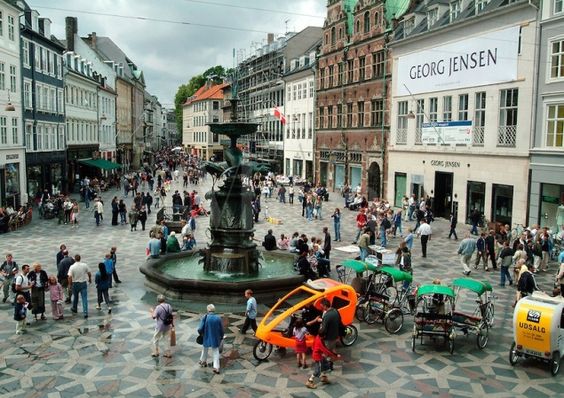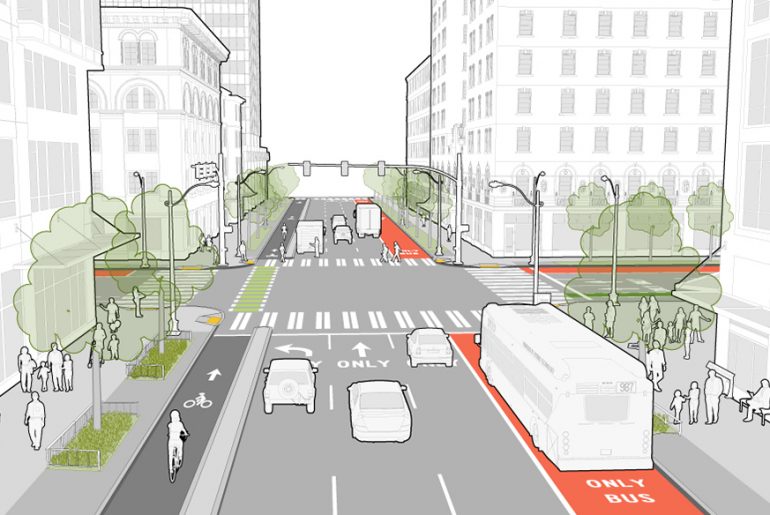Streets are the lifelines of any city. If someone wants to explore the culture of any city, the streets are the best place to wander all day long. Streets are one of the crucial city elements that signify the public life of the place. Hence, streetscaping becomes the determining criteria for the success of the city. Streetscape is a term used to emphasize the importance of streets in a city. The streetscape of any city portrays the natural built fabric of the street that adds to the experiential quality of that space.

Streets are one of the crucial city elements that signify the public life of the place. Hence, streetscaping becomes the determining criteria for the success of the city.

The streetscape of any city portrays the natural built fabric of the street that adds to the experiential quality of that space. Streets are the lifelines of any city. If someone wants to explore the culture of any city, the streets are the best place to wander all day long.
A Street not only provides access to places but can also be a place to be in and experience a space. Streets are used by a number of stakeholders such as pedestrians, hawkers, cyclists, and vehicle users. The residents residing on a particular street also play an important member to analyze the quality of that particular area. Hence, as architects or urban designers, it is our responsibility to one must create streets that provide a liveable experience.
As Architects and Urban Designers, capturing life in a city is very important. The public spaces are the essence of any city and hence, the designer cannot overlook the image such spaces are reflecting. Any streetscape design does not only involve aesthetically improving street life but also it should look at a sustainable approach. The streets are public property; therefore it is necessary that the user should feel a sense of belongingness on that street.
Therefore, the term streetscaping is an important urban design element that has the potential to convert just a path into a happening place. Streetscaping or revitalizing any street can be done by keeping in mind elements that help in creating a better environment.

- First and foremost is the space for walking. To make a street accessible for people, Sidewalks are an important component that gives a safe, attractive and comfortable experience to the user. Pedestrian paths can be designed to enhance the visual experience that is very essential in streetscaping. The Designer can work with paving patterns, seating spaces, Green areas as well as lighting fixtures.
- Treating Street corners or edges. Edges are basically the junctions where the streets intersect. The junction that is created acts as a meeting or gathering spot for people. These cross-sections, when planned precisely, create a sense of identity in that neighborhood as well.

- Enhancing Landscape Details. Green strips in between the vehicular path and pedestrian path are the best design idea that makes a beautiful transition between the two areas. It not only creates a buffer zone from the moving traffic but also bifurcates the noise. Adding green can also act as a stormwater collection pit where all the runoff water can be collected and filtered back into the groundwater region.
- Adding Street furniture. Street furniture such as benches, lighting fixtures, signage, waste receptacles, etc. when placed consistently on a street, it gives a user a sense of comfortable environment. The street furniture provides, especially the pedestrians, an enjoyable experience where way-finding, relaxing or moving out at night becomes easy.

Keeping “eyes on the streets”. This termed was coined by Jane Jacob in her book the death and life of great American cities. The concept behind this tag is to provide activities along the streets that keep the movement and the security of the street intact. Creating space for hawkers, open street cafes or utility booths along the street helps in proving a safe and secure experience all along.
Streetscape, hence, plays a vital role in portraying the visual image of cities. It is one of the important factors that help in representing the city’s culture globally. If we look at old city towns, streets were extensively used by people. In such cities, the built fabric also respected the street networks. The junctions acted like nodes where people gathered for conversations. Any active street in a city also encourages pedestrianization, social and economic interactions.

As Architects and Urban Designers, capturing life in a city is very important. The public spaces are the essence of any city and hence, the designer cannot overlook the image such spaces are reflecting. Any streetscape design does not only involve aesthetically improving street life but also it should look at a sustainable approach. The streets are public property; therefore it is necessary that the user should feel a sense of belongingness on that street.

In order to create a sense of belongingness on any street or urban space, there can be many design ailments that one can propose. For example, infusing public art can help in contributing to the local identity of any neighborhood. (Lodhi art district) It adds to the richness of the built environment and at the same time, provides an expression of that community. It builds a sense of ownership as well for the community.
To conclude on the importance of streetscapes, we should understand the need for sustainable street design in city planning. For any city, the streets are the reflection of its cultural and traditional values. Architects and Urban designers have to develop the scheme that looks after the publicness of the area and can contribute towards the liveliness of the place. For sustainable streetscaping, there are many components that characterize street life such as legibility, safety, adaptive and economical, etc. If any design proposal fulfills all the necessary requirements in streetscaping, it is providing the city one of the happening places where people live, work and play together.

















